Business leaders often say that the biggest asset within their company is their people. But if so, why is HR so frequently undervalued? While finance, marketing, operations and even digital roles often have a place at board level, many companies have no HR representation in the C-Suite and HR is often seen as a support function, rather than a critical role within the business.
We look at the trends in HR representation at the top levels of the company, the reasons HR is undervalued and, most importantly, how HR teams can get their voice heard and raise their profile within their organisation.
With the impact of a global pandemic, HR teams were suddenly at the forefront of massive changes at an unprecedented level. Almost overnight, companies needed to react, implementing new remote working policies, furloughing team members and changing how people communicated and how managers interacted with their teams.
The continuing and unpredictable nature of the pandemic has meant that HR teams have led the business through changes which have impacted wellbeing and mental health, productivity and ongoing communications, while also continuing with their usual workload.
The sudden changes should have demonstrated the central importance of HR leaders and the strategic nature of their role. And within some businesses it did – but that was far from widespread.
Worryingly, data shows that HR is still viewed as a support function, even after all the changes. New research shows a disconnect between the view of HR leaders and CEOs.
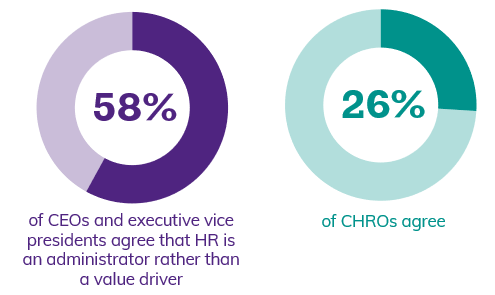
Even the level of involvement in pandemic planning is different: 95% of HR leaders say they played a leading role, whereas only 81% of CEOs think they did. As a result, 79% of CEOs say HR needs to reinvent itself vs 60% of HR teams. This clearly shows a disconnect between HR leaders and other senior leaders within the organisation, where a lack of recognition means that HR is not valued.
This lack of perceived value appears to permeate most levels of HR. Data from the UK showed that HR teams received the third lowest salary increases by job function, with an increase of just 1.9% in 2020 – lower than the UK average of 2.32%. This despite all the additional work and responsibility that the pandemic has driven. The good news is that once HR gets to the top table, salaries are significantly higher. CHROs are on average the third top paid executive (after CEOs and COOs), with their average base pay at 33% more than CMOs.
However, the role of CHRO is still not widespread. In a world where some companies are proudly promoting the fact that they have no HR function, how can HR teams step up and raise the profile of this essential business function?
Want to read this offline or share with a colleague? Simply fill in some details to download a copy.
As far back as 1997, McKinsey said that, in the war for talent, hiring the right people was the number one driver for business performance. So it should be no surprise that when companies give their HR leaders the power to influence at the top level, they can see a significant positive impact. Research found that where companies viewed HR as a value driver rather than an administration function, they were more positive about the future, more likely to be adopting leading technologies and also expected to lose fewer employees as a result of the pandemic (10% vs 17% for other organisations).
Other research showed that where HR teams were empowered to create talent processes to grow future leaders, the impact was huge:
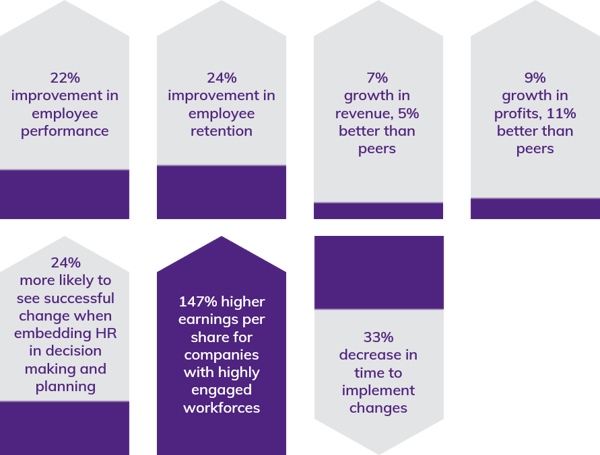
Sources: Korn Ferry, Gartner
It is clear that there is a positive impact on the bottom line when HR is included in the C-suite. Here are a few specific areas where a CHRO can help.
While C-suite members may claim that they are in touch with their people, the data shows a different story. When asked about how the company is prioritising activities to support their employees, the disconnect is clear to see:
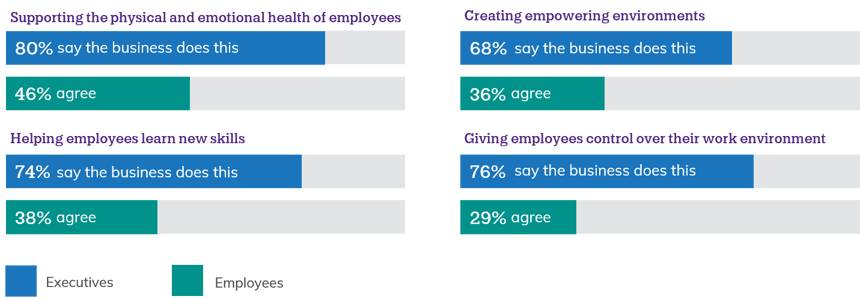
HR teams are often well-placed to bring the voice of employees to the board but are unfortunately frequently excluded from these conversations.
That lack of connection is also exhibited in the difference between C-suite priorities and those for HR teams. Research showed that the C-suite said their main focus was reducing organisational complexity, ensuring employees had the right skills and addressing employee burnout. Meanwhile, HR teams said the focus should be on agility and flexibility.
Without HR having a voice at the top table, businesses run the risk of prioritising the wrong employee initiatives and incorrectly evaluating their success.
Employees should be a key focus for every business. And no one is better placed than HR to discuss how to develop people, retain key people, plan successions, and tell a compelling brand story to employees and candidates.
But the arrival of a pandemic has really placed the focus on how companies can place their people first and adapt when significant changes occur. Not only does research show that companies were a trusted source of information during this time (higher than the government or the media) but also that companies communicating positively about their human capital response had a better financial position.
HR leaders have been key in the crisis, ensuring that employees are placed at the heart of decisions and that communications are clear and supportive. It’s highly likely that the impact of the pandemic will change working life in the long-term, so having HR at board level will remain essential for businesses to unlock their potential.
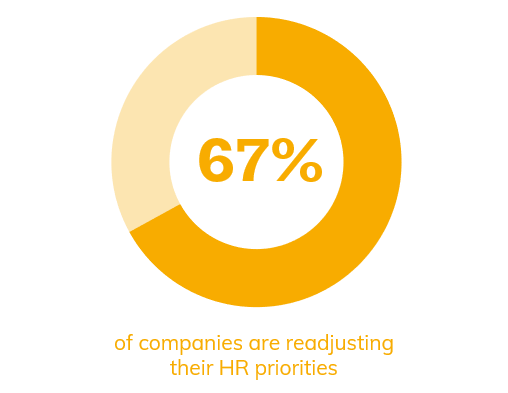
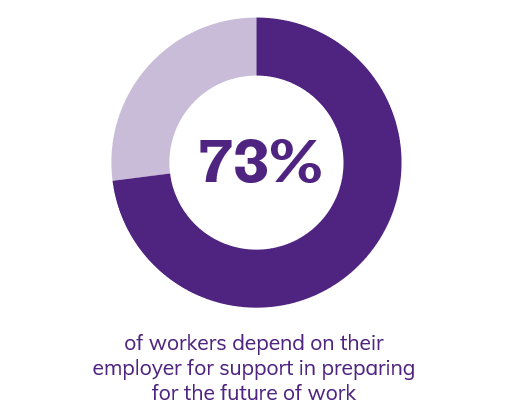
Sources: Josh Berstin Academy, HBR
It’s perhaps unsurprising that January 2021 saw the worst wellness figures on record for the UK. The impact of the pandemic combined with the traditional negative feelings at that time of the year to lead to an increase in stress, anxiety and depression.
As employees faced huge changes in how and where they worked, together with worries about job security, it became clear that workplace wellbeing was at the forefront of employer brand perceptions. Companies who could step up and support their people compassionately and empathetically were more likely to be seen in a positive light, helping to improve retention and attraction.
HR should be at the forefront of these changes, supporting employees in both formal and informal ways. Companies without an HR representative on the board may be more likely to overlook how strategic changes impact their staff or disregard the way that changes are communicated.
Over the last year, the focus has been rightly on diversity and inclusion. Businesses have recognised that customers and employees are placing increasing importance on whether their workforce is diverse and how they are working to ensure equality. Given this key focus, it’s important that HR are leading this, often alongside a dedicated diversity champion.
Whatever the approach, it’s essential that D&I is a topic that is discussed in the boardroom and that companies work to address the complex issues around lack of representation and inclusion. This requires a fundamental review of policies, leadership and culture, which CHRO and Chief Diversity Officers are well-placed to lead.
With the value clearly established, it could be expected that businesses will be embracing the opportunities and ensuring they have a CHRO or CPO on their board. However, that is far from the case.
Our research found that just 49 FTSE 100 companies have a CHRO or equivalent in their business. A further 37 have a dedicated individual responsible for human resources sitting at VP or senior director level. 15 companies have neither.
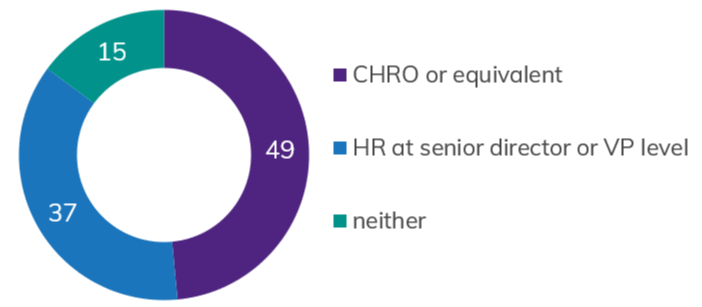
Research by KPMG found that increasingly CHROs have wider expertise, with 82% having worked in other business functions. They are also more likely to have a professional HR qualification than in the past.
Lack of HR experience at board level is also more widely apparent. Data shows that only 5 of the 595 board members in the FTSE50 had any HR experience, so not only is the role of CHRO under-represented, but there is also a lack of expertise in other roles.
It’s not just at the top companies that HR is under-represented. Research shows that for mid-sized companies, this is even lower with only 7% having an HR executive in the C-suite.
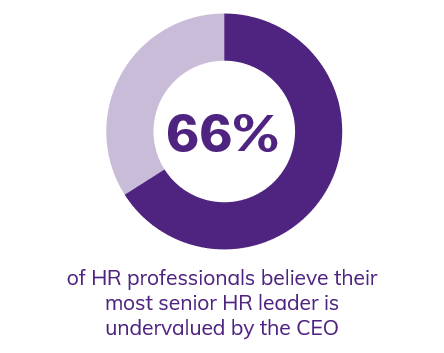
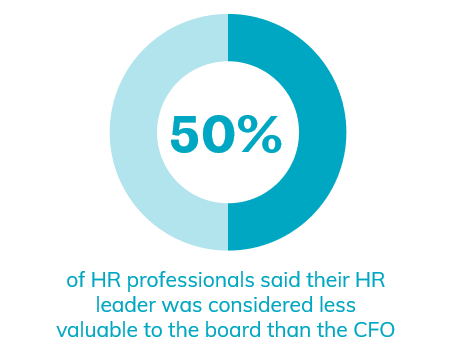
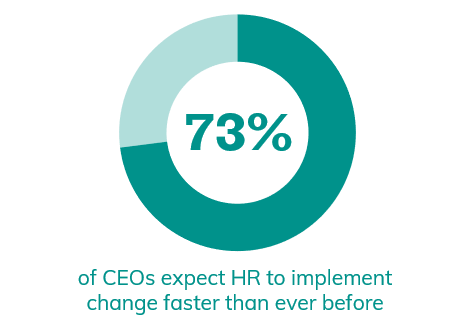
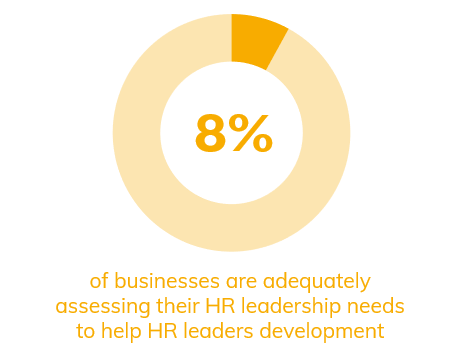
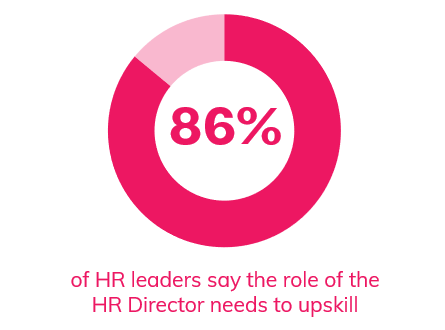
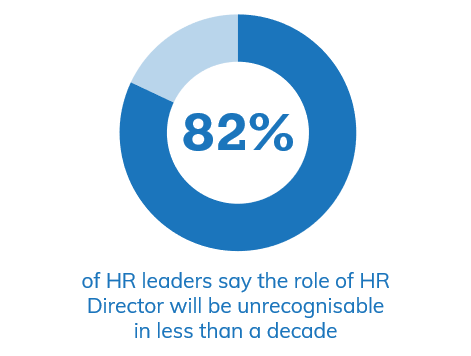
Source: Harvey Nash, Gartner, Sage
With these changes coming, now is a great time for HR leaders to raise their profile and work to get a place on the board. With much talk about adding new types of roles to the C-suite, it’s time businesses ensured that the CHRO was amongst them.
Want to read this offline or share with a colleague? Simply fill in some details to download a copy.
There is clearly an opportunity for HR leaders to increase their influence and get the place they deserve at the top table. But how can HR leaders do this?
At C-suite level, conversations need to be connected to business drivers. In order for HR leaders to have traction, they need to focus on what’s important at that level. Understanding how HR initiatives impact the bottom line and how changes in the people strategy could make the business more successful will enable HR leaders to gain traction and be heard.
This also includes using the right language. Thinking about how issues are discussed and trying to avoid HR jargon can help avoid other C-suite leaders disconnecting.
By focusing on what’s important to leadership and explaining it in an accessible way, HR leaders are more likely to have your views considered and more likely to be able to carry out a strategy which has a positive impact for employees and candidates.
Having access to the right insights is key to improving HR’s visibility. The move to data-driven decision-making is impacting all parts of organisations, and HR is no different.
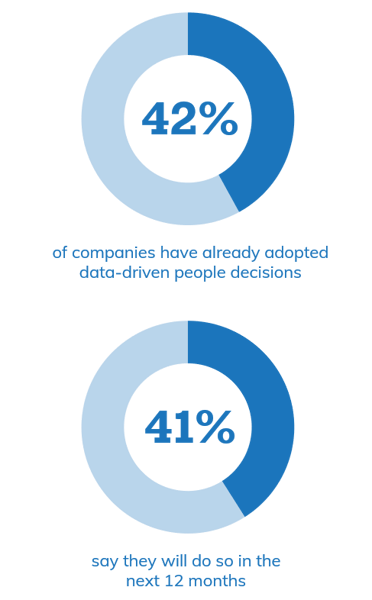
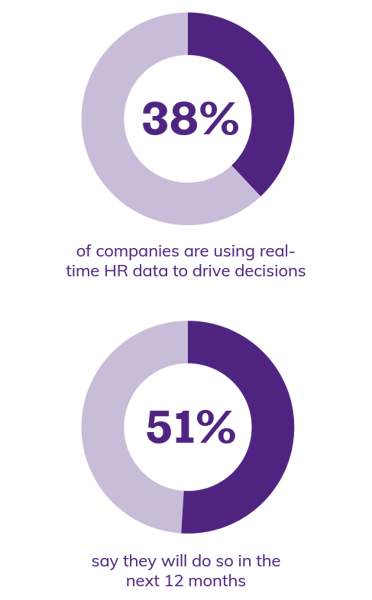
Source: Sage
Of course, having the right data is the first step. HR teams also need the insights to be able to understand how to act on what that data is telling them. Often companies have a wealth of data but either lack the time or expertise to be able to understand what actions should be taken as a result.
It’s also essential that, for discussions with the C-suite, that the data is aligned with business goals. While HR metrics may be useful within the team, HR leaders need to ensure that they are again aligning these to business drivers. When done well, this can help to win approval for change – and secure budget which is a top concern for 23% of HR Directors.
The impact to getting this right can be huge. Virgin Media offers a superb case study in how to do this well. When analysing candidate experience, their new Head of Resourcing uncovered that a poor interview process was costing the business £4.4 million due to unsuccessful candidates cancelling their subscriptions. Taking these findings to the CFO and CMO, he got buy-in to transform the recruitment process and improve candidate experience. This shows the impact of tying your concerns to bigger business metrics. Read the full case study here.
Not every business has access to the right data within the talent space. We can help to uncover insights about your business, your competitors and the market that can help you have these top-level conversations.
If the pandemic taught us anything, it’s the need to be adaptable. Businesses face a constantly changing market, sometimes on a small-scale and sometimes large. And while unprecedented situations such as a global pandemic are hard to predict and even harder to plan for, some changes can be predicted.
HR leaders are uniquely positioned to offer value to a business – and often have a different perspective. As an example, research by KPMG found that 60% of HR teams believe AI will eliminate more jobs than it creates. 62% of CEOs think AI will create more jobs than it eliminates. These differing perspectives help businesses test assumptions and identify where insights are needed to guide strategy.
By watching competitors and seeing who they appoint, HR teams can also bring value. For example, in 2014 Apple began to hire people with a medical technology background, which could have acted as a predictor than they would be focusing on the use of their products for medical purposes.
By keeping a close eye on trends in the HR space, moves by competitors and how internal strategy may affect employees, you can add value and get your voice heard at senior level.
One of the advantages of holding a senior position is that it allows HR teams to take a proactive approach to recruitment. Instead of responding to situations, HR leaders will be in the position to have the influence to discuss people strategies ahead of changes coming through.
This allows you to:
These are just some of the areas where having a voice on the board can enable HR leaders to influence strategy. The right insights and approach can increase visibility and show how strategic people decisions are intrinsically tied to business success.
To have the most impact at board level, it’s important that HR leaders don’t get pushed solely into a focus at the beginning of the talent lifecycle.
 There is value at every stage. But often, because these areas may be given less focus, the most impact can be realised with established employees rather than candidates or newer members of staff.
There is value at every stage. But often, because these areas may be given less focus, the most impact can be realised with established employees rather than candidates or newer members of staff.
Many businesses struggle to access these insights, not least because there can be some concerns about how open employees feel they can be. Our talent intelligence service provides an independent, external approach to uncover insights that can businesses may not be able to access themselves, helping to building understanding of both candidates and employees and enabling them to make changes to improve reputation and retention.
While progression to the CHRO role will vary with each business and each individual, there are some commonalities which can be helpful to know.
Data shows that the path is mostly through internal succession or promotion, with 85% of first-time CHROs coming via that route. As many as 66% of CHROs have been with the company for 15 years or more before landing the job, although 12% have 0-5 years within the business.
Taking an internal route is likely to be the most successful for those looking to step up to a CHRO, as those recruited from outside the business typically have previous experience in the role. In the data analysed, 82% had already worked as a CHRO and 100% were moving from a larger to smaller company.
In the modern world, as technology grows and business changes impact everything from employee wellbeing to retention figures, it’s essential that HR breaks out of its silo. This is becoming increasingly true for CHROs and is an important focus for HRDs looking to take a step up.
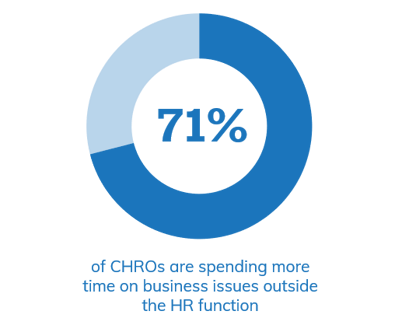 There are some key affinities worth exploring:
There are some key affinities worth exploring:
When organisations understand the importance of their people, they are more likely to achieve business success. As discussed, CHROs can provide insights into employee perspectives and perceptions, giving the business a reliable view. Interestingly, research found that, CHROs had the second highest affinity with the CEOs’ leadership style, making them perfectly placed to add value and challenge decisions. Having the right intelligence allows CHROs to do this.
With the impact of the pandemic, changes in technology and working methods were suddenly front and centre. While changes to systems were important, it was also essential that organisations understood how new ways of working impacted their employees. As time went by, businesses were better able to understand the pros and cons of this new approach – and the CHRO and CIO were well-placed to adapt and ensure that these changes were having a positive impact on the business.
In the longer term, as remote work looks to continue, having the right approach and technology for recruitment, onboarding, training and more should be the joint domain of the CHRO and CIO.
Brand is an essential element in not only attracting customers but also employees. EVP and employer brand should be seen as simply an aspect of the overall brand, owned by the CEO and delivered by the CMO and CHRO. Each person brings a unique perspective – the CEO champions the brand and ensures it has visibility, the CMO can view it from the customer perspective and the CHRO can bring a candidate and employee perspective. When these combine, the impact can be powerful.
While we’re considering how to get HR onto the top table, what happens next? Are there opportunities for CHROs to step up to the ultimate top job as CEOs?
Given the struggle to get HR onto the top table at all, it should perhaps be unsurprising that CEOs rarely come from an HR background. Research shows that the most likely route to the CEO position comes through finance, operations or sales and marketing – HR is significantly less likely. 55% of CEOs at FTSE companies came from finance. However, there are also tales of success too: CEOs at Xerox, General Motors and Dunkin’ Donuts have all had an HR background.
Given the similarities in leadership styles and the increasing focus on people, CHROs should be well-positioned to make this step up. By raising your profile internally and adding value, you can position yourself as the type of strategic thinker needed for the role.
One key question that people have asked is: do HR leaders want the top job? Given that it focuses on business metrics, there can often be an assumption that this isn’t a fit for individuals with an HR background. However, research found that this isn’t the case.
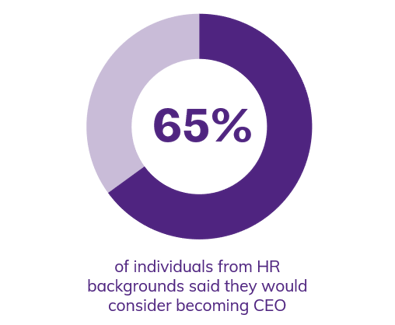
If you do have ambitions in this space, Forbes has some useful insights about the route to CEO. The first step is patience: the average time to a CEO appointment is 16 years. Non-executive experience also proves valuable, with figures showing that 45% of Fortune 500 CEOs have served as non-executive directors on public company boards. Taking a non-executive director role can open up opportunities and allow HR leaders to gain experience for both the CEO role and the CHRO role.
What is clear is that, no matter whether it’s as CEO or CHRO, in today’s companies the HR function should be in the C-suite.
© Talent Insight Group 2025